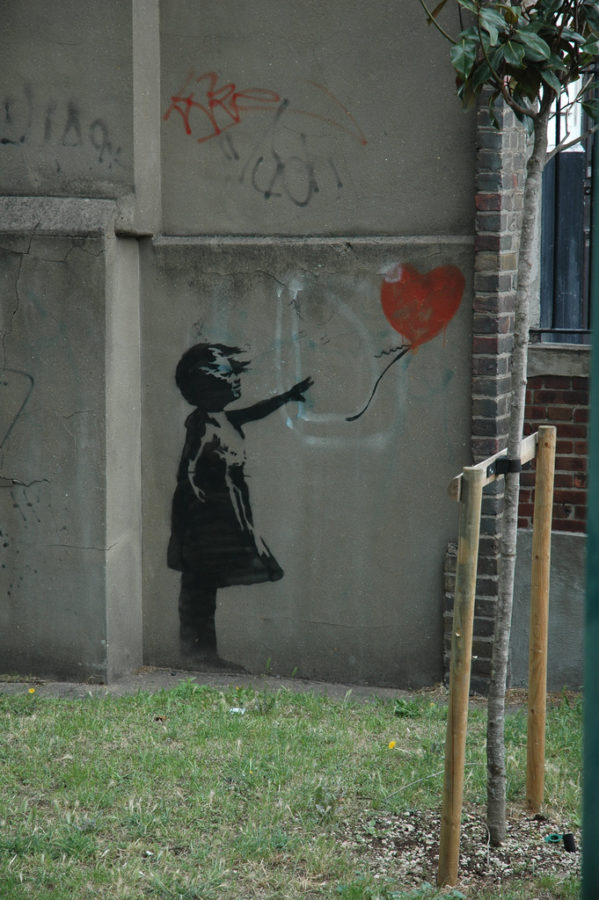Shred the message
Integrity vs. influence
Banksy’s painting, “Girl with Balloon” sold at auction for U.S. $1.8 million last week.
October 12, 2018
The work of world-renowned and anonymous street graffiti artist Banksy just sold at auction for £1.4 million (roughly $1.8 million in the U.S.) last week Friday.
If that statement seems paradoxical to you, you are not mistaken; it is indeed riddled with inconsistency. However, the story does not stop at the high-priced countercultural art sold at a premier artseller, Sotheby’s in London. Almost immediately after the auctioneer declared the piece sold, the auction-goers watched in horror as the wall-hung canvas started to seemingly fall out of its frame. It only got worse as it came out the other end sliced like tear-off tabs from a protest flyer on a college bulletin board. It’s this peculiar detail of the tale that feels oddly surreal.
Frankly, it seems phony and an awful way to communicate a message. If it isn’t phony, it’s at least the latter of the two.
Scott Reyburn of NYT reported on the suspicions surrounding the events that took place at the Sotheby’s auction.
“The frame would presumably have been rather heavy and thick for its size, something an auction house specialist or art handler might have noticed,” wrote Reyburn. “Detailed condition reports are routinely requested by the would-be buyers of high-value artworks.”
Throughout his article, Reyburn plucks at the loose threads within the accounts of both Sotheby’s and Banksy himself. The fact that a painting made by Banksy in a frame he made was brought to an institution steeped in wealth and capitalism as Sotheby’s doesn’t add up. The lack of basic functions of auctioning that the sale of Banksy’s piece leads many like myself to believe that it was some form of an inside job. Furthermore, the unclear source of the power driving the shredding to occur is left open.
Overall, the evidence doesn’t amount to a working reality and I’m struggling to find the silver lining in that. On the one hand, there is something to be said about the broader audience Banksy was able to reach with such a demonstration. On the other, I can’t seem to reconcile Banksy working with or even simply selling his art to the fat cats his very art ridicules in order to get a point across.
Defining the establishment of Banksy as the most prominent graffiti artist internationally was his resounding declaration of the power of the individual. The nonconformist attitude simply disappears in this act: Selling out gives away the message to highfalutin art collectors, the very faction he desperately wants to do away with.
The question, how does quality change the lens through which you see something, recurs throughout one’s life. As the question appears in this case, I draw parallels to other current events like the Kavanaugh appointment or commitment to safety against guns. In either of these instances, the character of the person or promise in question is not all it’s chalked up to be and I can’t help feeling dejected by the hidden reality of each example.
The same rings true in Banksy’s story. Ultimately, despite the initial hilarity of headlines and score for idealism, further inspection led to my frustration at the tainted reputation of an urban folk hero in my eyes. Whether or not the Sotheby’s sale of the Banksy for a lofty price was a hoax, the situation degrades the framework that built up the artist’s subversive aura.
Perhaps, I shall consider one idea the silver lining of this scenario: Getting your message across should never come at the cost of shredding it in the process.







